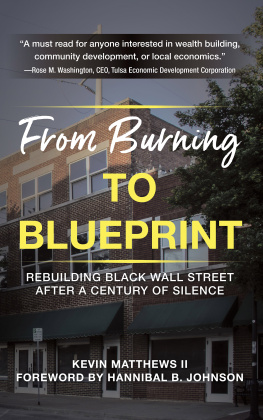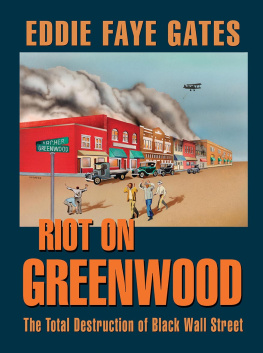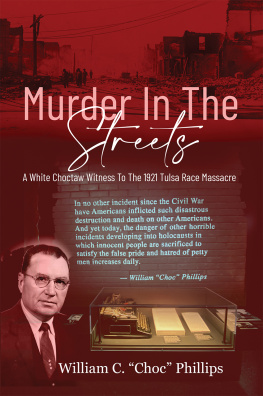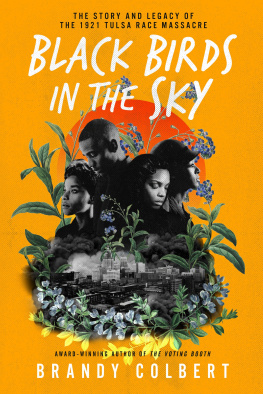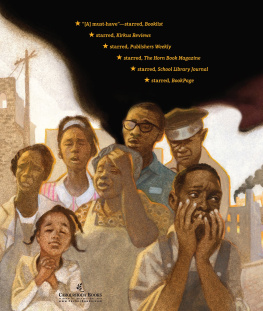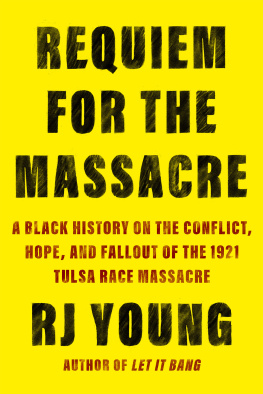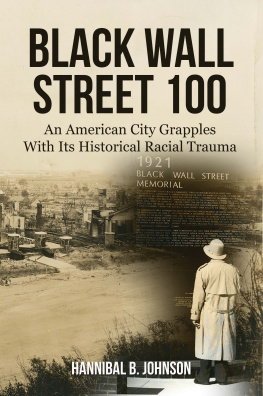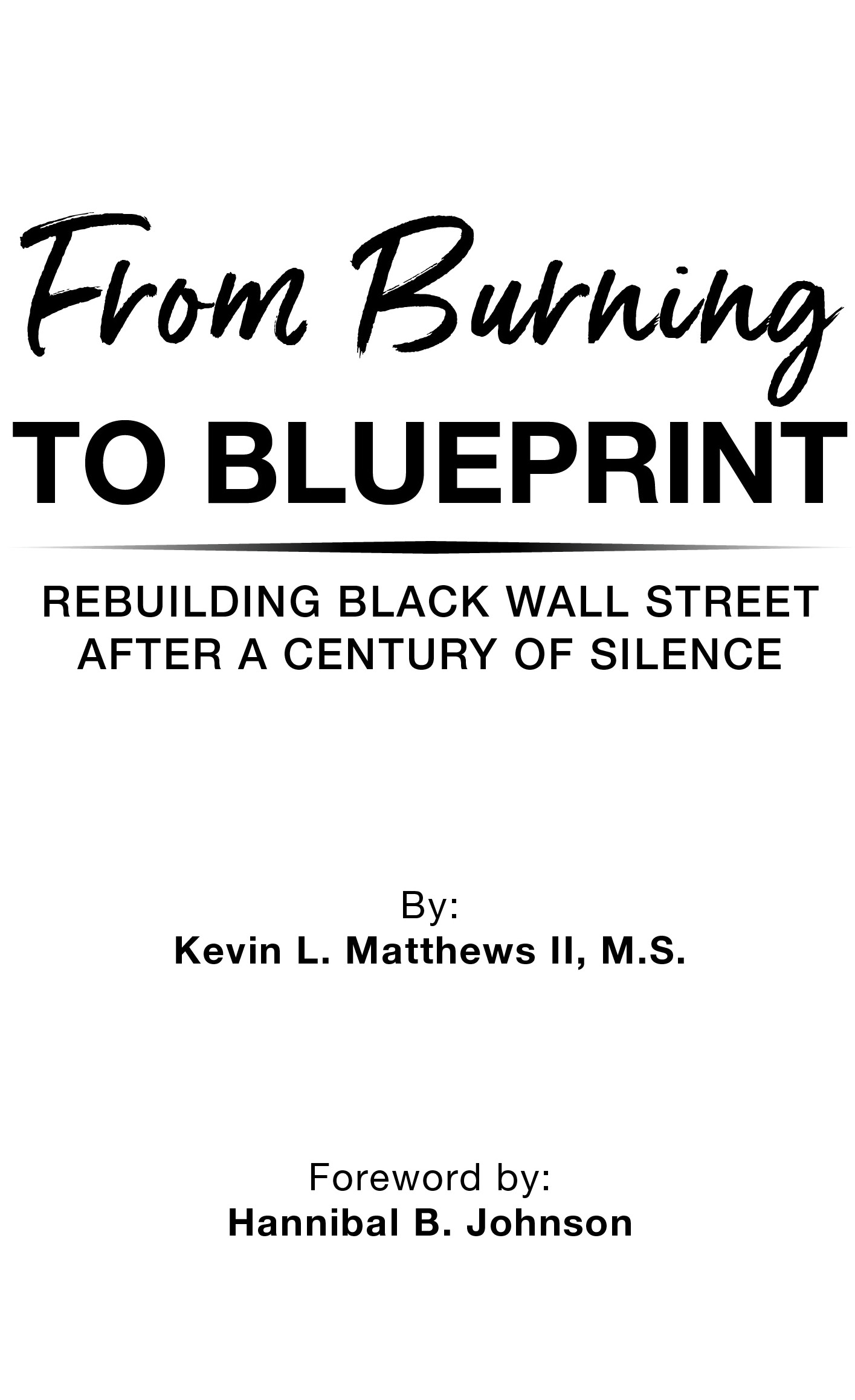

Kevin Matthews II has written an insightful book on the importance of Rebuilding Black Wall Street After a Century of Silence.
As his book aptly illustrates, we need to take responsibility for the wrongs of the past and present and engage in serious conversations that can help us move forward. The first step in the recovery process is admitting a problem exists.
As a fifth-generation Oklahoman, I did not learn about the Tulsa Race Massacre until age 45 when I was appointed to the Board of University Center Tulsa - now OSU Tulsa and discovered that the university had been built on ground where many lost their lives during the Greenwood Massacre.
Kevin tells the story of the 1921 Tulsa Race Massacre while trying to answer many of the questions he had as a child growing up just one block from the site of the massacre. He also discusses the current wealth gap that exists in our country and provides many useful ideas to make things better.
Tom Bennett, Jr.
PhD, Chairman of the Board, First Oklahoma Bank
Black Wall Street's destruction in Tulsa's forgotten past is crucial context for the obstacles to Black wealth today. With this insightful blueprint, its possible to overcome these obstacles and create long-lasting wealth.
Harlan Landes
Founder, The Plutus Foundation
Library of Congress Cataloging-in-Publication Data
Name: Matthews II, Kevin L., author.
Title: From Burning to Blueprint: Rebuilding Black Wall Street After a Century of Silence/Kevin L. Matthews II
Description: Tulsa: Kevin L. Matthews II | Includes bibliographical references and index. | Summary: Tells the story of the 1921 Tulsa Race Massacre in the era of the Black Lives Matter movement and social activism.
Subjects: Tulsa Race Massacre | Black Lives Matter | African Americans | Oklahoma History | Race | Greenwood (Tulsa, OK) | Racism | Economics | Racial Wealth Gap | Black Wall Street |
Identifiers: LLCN 2021905343 | ISBN 978-1-7366-6670-8 (paperback) | ISBN 978-1-7366667-1-5 (ebook)
LC record available at http://lccn.loc.gov/2021905343
Copyright 2021 by Kevin L. Matthews II
All rights reserved.
Book design by Marites D. Bautista
For Carol Watson.
Foreword
Hannibal B. Johnson
I n the early 1900s, the Black community in Tulsa, the Greenwood District, gained national renown. Dubbed Black Wall Street, the neighborhood teemed with entrepreneurial and business activity: professional service providers like doctors, lawyers, pharmacists, and dentists; commercial establishments like beauty parlors, barbershops, dance halls, pool halls, movie theaters, restaurants, grocery stores, and so much more. Greenwood Avenue, its nerve center, bristled with excitement and intrigue.
The 1921 Tulsa Race Massacre temporarily stilled the Greenwood District. Marauding rioters seized upon this segregated enclave, leaving in their wake death and destruction. The result: the worst incident of mass anti-Black violence in United States history.
In a remarkable resurrection, Tulsas Black citizens rebuilt the Greenwood District from the ashes. The community peaked in the early-to-mid-1940s, boasting well over 200 Black-owned, Black-operated enterprises.
Beginning in the 1960s, changed social, political, and economic conditions at the local, state, and national levels sparked a steep downward spiral. Integration and urban renewal ranked among the chief catalysts of this marked decline.
Integration loosened the Jim Crow-imposed grip on Black dollars that kept Greenwood District businesses afloat. Urban renewalspecifically, the location of Interstate 244 that now bisects the Greenwood Districtremoved Black businesses and Black bodies from their homes.
Todays Black Wall Street, an integrated, collaborative community, consists of residential, commercial, artistic, educational, cultural, entertainment, and religious elements. These entities work together to reclaim part of the past glory of this special, and for some, sacred, place.
As Chair of the Education Committee for the 1921 Tulsa Massacre Centennial Commission (Centennial Commission), I devote considerable time to educational and curricular matters. I also serve as local curator for Greenwood Rising, the history center built by the Centennial Commission. Among the chief goals of the Centennial Commission and Greenwood Rising is sharing the complete narrative of Tulsas Historic Greenwood District with the world.
The overarching element of that story is the triumph of the human spiritindomitability, perseverance, and resilience. The Greenwood District originals envisioned something remarkable, brought it to fruition, witnessed its destruction, and rebuilt it from the smoldering ruins.
We must teach this history for its moral lessons, no doubt. But we must all teach it for the early examples of Black economic and entrepreneurial success it offers; for the modeling it provides. The Black Wall Street icons succeeded in places and spaces where failure seemed foreordained. Surely, then, we can surmount lesser mountains.
We must acknowledge that systemic racism exists in this countryalways has. For our lifetimes, it will continue to exist, perhaps diminished, but never fully abated.
That said, the challenges that confront us today pale in comparison to those our Black Wall Street forebears faced. Nevertheless, they achieved. The economic and entrepreneurial legacy they left should place us in the no-fear zone.
We must continue to chip away at systemic racism while we simultaneously seize our rightful places in the economic sphere despite the artificial barriers we face . That is the Black Wall Street Mindset.
The Black Wall Street Mindset is a mental construct predicated on the indomitable human spirit exhibited by the titans of Tulsas Historic Greenwood Districtpeople like J.B. Stradford (attorney and hotelier); Mabel B. Little (beautician and community activist); A.J. Smitherman (journalist and civil rights activist); O.W. Gurley (businessman and developer); Simon Berry (transportation entrepreneur and hotelier); John & Loula Williams (business owners of multiple enterprises); and Mary Elizabeth Jones Parrish (journalist and author).
The Black Wall Street Mindset is malleable and portable; agile and not moored to any specific geographic area, though inspired by the Black Wall Street originals. It is not constrained by limiting social conditions like Jim Crow segregation the founders of the Greenwood District faced. Its reach is global; universal.
Kevin L. Matthews II, the son of an entrepreneur, is a former financial advisor. He wrote this book, From Burning to Blueprint: Rebuilding Black Wall Street After a Century of Silence , to share insights and guidance about Black engagement in the economic arena, both individually and collectively. Black Wall Street is his inspiration.
Matthews implores us to recognize Black spending power and savings potential. He challenges us to create, grow, and protect Black wealth. He counsels us to invest knowledgeably and prudently.
Matthews work suggests Black economic and entrepreneurial prowessthe Black Wall Street Mindsetis the sine qua non of Black progress. The way forward involves expanding the Black bourgeoisie in ways that reaffirm cultural connections and reassert demands for social, political, and economic justice throughout American society.

